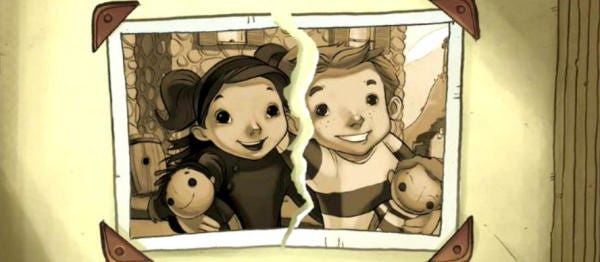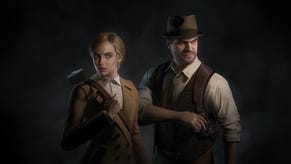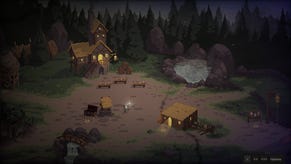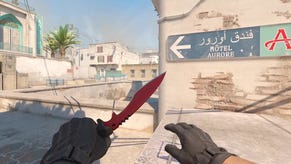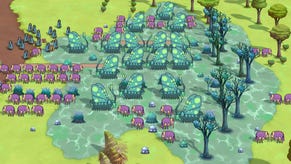Remembering Adventure Games: Rosemary
We were contacted by Clara Fernández-Vara to let us know about a short adventure game she has developed at MIT as part of her dissertation on the subject. Now that's a dissertation I'd like to write. The game, made along with a team of students, is an exploration of memories and nostalgia, and can be downloaded for free from here. It's called Rosemary, and is worth a look.
It's about revisiting your past, reliving childhood memories. After routing around through old photographs Rosemary discovers a picture of her and her childhood best friend, Tom. She'd long believed that Tom had been an imaginary friend, as her parents had insisted this was the case. Intrigued to discover he was real, she revisits the town in which she grew up.
The central premise is a fantastic idea. Of course many games have used the two time zones dynamic, but there's something very special about transferring between today's day's run-down and dulled reality, and the brightly coloured optimism of Rosemary's remembered past. It's also the device used to puzzle, recalling objects from the past in order to find them in the present day, and vice versa.
The trouble is, it's not applied in a realistic or logical way. The lunchbox would be the best example: only after you remember that Tom would hide objects for you in his lunchbox does the box appear in the present day. Huh? In reverse this would make sense, remembered in the present day such that it now appears in the memories of the past. This is how the logic is applied with the cinema posters, and if used universally would have made for an intuitive and interesting tool. The hook puzzle almost works well - remembering where something was in the past such that you can find it in the present day. But once again, its modern physical hiding place only exists once the memory occurs. A game in which you explore the town in its current form, discovering things that fill in the gaps in your explorable memory, that then means you can find them in the present day: would have been slick and interesting. Sadly this happens in the opposite direction on more than one crucial occasion.
The other idea that comes so close to being brilliant is the use of verb buttons. Alongside a slightly frustrating technical issue with the buttons not showing as selected as you click on them, there's the disappointment when you realise that the tactile interaction options are not always greyed out in the past. At first you can look, listen to and smell past items, in ways that the memory could perform. Options to take, dig, open, hit and put are blanked out. This makes perfect sense. When in memories it shouldn't be possible to manipulate the environment. However, later in the game (which is at most about 20 minutes long), this is abandoned. Even in locations where once they were unavailable, they appear.
This may seem a rather in-depth and ferocious description of what's wrong with a free game made by students, but there's two reasons for that. One, it's made by students! Learning process, and so on. Secondly, it's because it's so close to a good idea. With tweaks and changes, and a little more development of the theme, it could be a moving and involving idea.
The art is lovely, reminding me of Professor Layton. The photo album idea is a sweet device for bringing back memories, and for filling in the back story. It's bursting with great ideas. It comes quite close to delivering on them.
You can read Fernández-Vara's thoughts and criticisms of the game here, along with some interesting commentary on the testing process, and how the game was used as a means of learning for the students.
